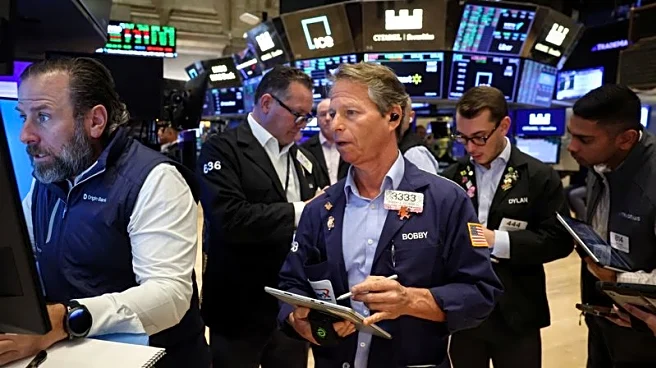What's Happening?
The Institute of International Finance (IIF) has reported that global debt has reached a record $307 trillion in the second quarter of the year. This increase is primarily driven by developed markets such
as the United States, Japan, Britain, and France. The global debt-to-GDP ratio has risen for the second consecutive quarter to 336%, largely due to a slowdown in growth and easing inflationary pressures. The IIF anticipates that the debt-to-output ratio will surpass 337% by the end of the year. The report highlights that more than 80% of the recent debt accumulation has occurred in developed countries, while emerging markets like China, India, and Brazil have also seen significant increases.
Why It's Important?
The rising global debt levels pose significant challenges for both developed and emerging markets. High debt levels can lead to reduced spending and investment, potentially stifling economic growth and affecting living standards. Developed markets are struggling to return to pre-crisis fiscal positions, exacerbated by energy shocks from geopolitical events like the war in Ukraine. Meanwhile, emerging markets face pressure as investment shifts towards less risky developed markets. The situation underscores the need for careful fiscal management and policy adjustments to mitigate potential economic disruptions.
What's Next?
The Federal Reserve is expected to maintain its current interest rates until at least May of next year, which could further pressure emerging markets. The Fed's decision on interest rates will be closely watched, as it could signal future monetary policy directions. Policymakers and financial institutions will need to address the challenges posed by high debt levels to ensure economic stability and growth.













